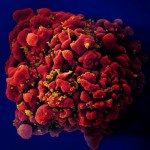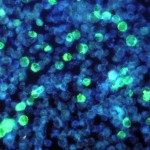Link to Pubmed [PMID] – 19587013
J. Immunol. 2009 Aug;183(3):2142-9
Lymph nodes (LNs) have been long considered as comprising few invariant NKT (iNKT) cells, and these cells have not been studied extensively. In this study, we unravel the existence of stable rather than transitional LN-resident NK1.1(-) iNKT cell populations. We found the one resident in peripheral LNs (PLNs) to comprise a major IL-17-producing population and to express the retinoic acid receptor-related orphan receptor (gamma)t (ROR(gamma)t). These cells respond to their ligand alpha-galactosylceramide (alpha-GalCer) in vivo by expanding dramatically in the presence of LPS, providing insight into how this rare population could have an impact in immune responses to infection. PLN-resident ROR(gamma)t(+) NK1.1(-) iNKT cells express concomitantly CCR6, the integrin alpha-chain alpha(E) (CD103), and IL-1R type I (CD121a), indicating that they might play a role in inflamed epithelia. Accordingly, skin epithelia comprise a major ROR(gamma)t(+) CCR6(+)CD103(+)CD121a(+) NK1.1(-) cell population, reflecting iNKT cell composition in PLNs. Importantly, both skin and draining PLN ROR(gamma)t(+) iNKT cells respond preferentially to inflammatory signals and independently of IL-6, indicating that they could play a nonredundant role during inflammation. Overall, our study indicates that ROR(gamma)t(+) iNKT cells could play a major role in the skin during immune responses to infection and autoimmunity.

